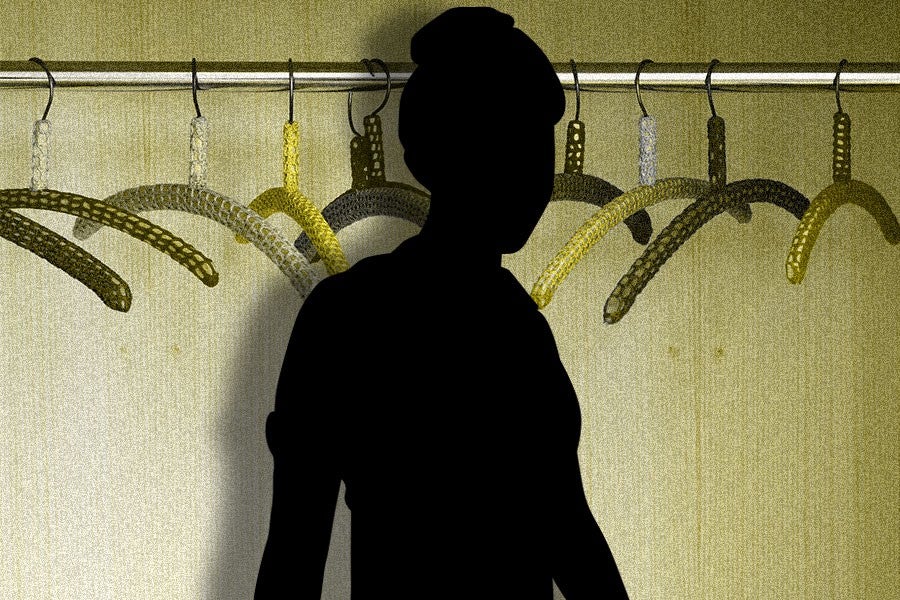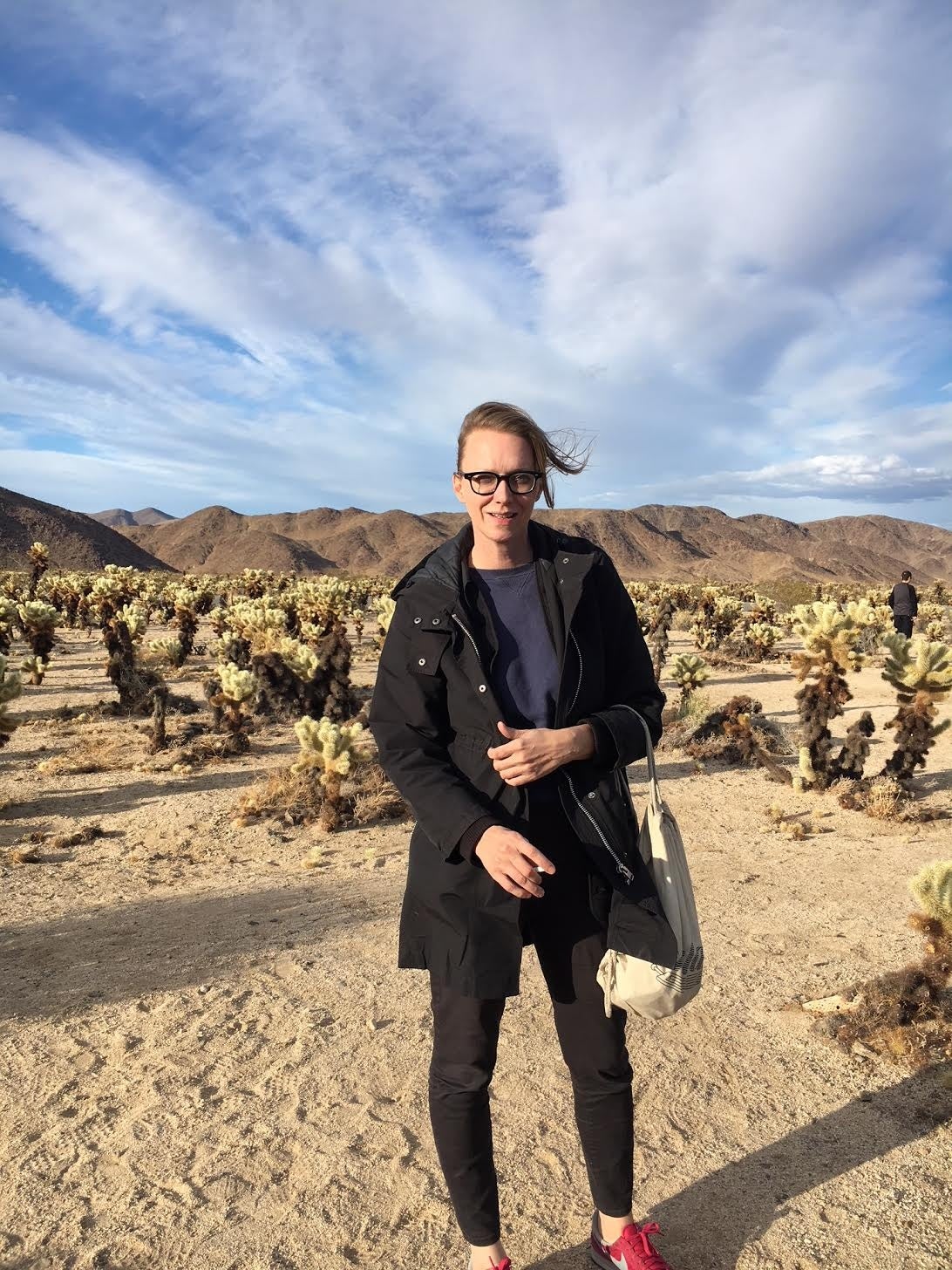You could die at any minute, which sucks. But what sucks more is how right after you die, your family and friends are going to show up at your house and stare, slack-jawed, at all your dumb stuff. They will be sad, certainly, but not too sad to rifle through all that dumb stuff, picking over what they want for themselves. If you have any good stuff at all, they’ll probably argue over it.
Next, after the good stuff is ravaged — and, heads up, you have no idea what they will consider the “good stuff” — they’ll stare in bewilderment at the fact that, for some inexplicable reason, you thought it was a good idea to hold on to two nonworking toasters, six old Dell computers, and a pair of ice skates, never worn. And we haven’t even made it into your top dresser drawer, which contains gross old underwear and a collection of vintage Juggs magazines. If the burning sense of shame you experience thinking about this moment isn’t motivation enough to try Swedish death cleaning, nothing is.
Swedish death cleaning, which means decluttering before you’re dead (off the Swedish word “dostadning,” meaning death and cleaning), is the latest international advice for cluttered, consumerist, hoarding Americans. We love outsiders telling us how to live less gross existences, and proof is in the last cleaning craze that took our homes by reductive storm: Japanese minimalist Marie Kondo, whose The Life-Changing Magic of Tidying Up asked us to consider whether the many unnecessary objects we keep spark joy or make us feel alive. If not, toss them.
The Gentle Art of Swedish Death Cleaning, the book on the subject from octogenarian Margaret Magnusson (out in January, 2018) puts Kondo’s question another way: Do the things we keep spark not joy, but shame? The sort of shame that comes with thinking about being dead and having people gawk at your stuff? Well, that’s not exactly how she puts it. Magnusson’s emphasis is a tad gentler. “Will anyone I know be happier if I save this?” is the real distillation of her approach, Business Insider reports.
But there’s nothing indirect about it. “Imagine you could die tomorrow,” Magnusson says softly in an interview on YouTube about her method. “Who’s going to take care of all this crap?” Magnusson knows who: She spent an entire year sorting through her husband’s belongings after he died.
“One day when you’re not around anymore, your family will have to take care of all that stuff,” she continues. “And I don’t think that’s fair really.”
Ha, no, it’s not fair. It’s actually horrifying, emotionally and physically draining, depressing, and incredibly burdensome, especially because you have to do it while also managing totally debilitating grief.
Case in point: My mother died last year a week before Christmas, leaving behind four daughters and a 2,400 square-foot home stuffed with a lifetime of stuff. At 64, after having spent her career as a teacher and librarian and her free time as a technology lover and master gardener, she died having amassed a staggering number of things.
Closets bulged with clothes and shoes. The garage was full of gardening tools, old board games and a Jeep she hadn’t driven in years. There were bookshelves that stretched floor to ceiling in multiple rooms stuffed with endless collections of mystery novels — her favorite. There were old blankets. Hand-sewn pillows. My god, the pillows. Scraps of fabric that would never live as the blankets they were meant to become. Multiple sets of dishes. I have never seen one woman more diligently complete the entire Pfaltzgraff collection.
There were computer hard drives and outdated manuals to accompany them. Photo albums filled with a photography phase and our childhood moments. Jewelry boxes filled with cheap costume jewelry indistinguishable from tasteful gifts from various men.
And get this: She also had the bulk of her own deceased mother’s estate, filled with more stuff: cast iron skillets, more dishes, more quilts, more fabric. Then there were the things that signaled the end of her life: medications to help her breathe and medical equipment to assist in mobility.
This house contained multiple generations of collected, unscrutinized stuff, some of it deeply personal, some of it clearly no longer even acknowledged. Sorting through the assorted objects of her existence was, no question, one of the most difficult things I have ever done, and I have dated musicians.
This is, to be clear, not in any way a judgment of her life or worldly possessions: We can’t all be out in front of the story of our own lives, much less our deaths. People die suddenly, without warning, all the time. My mother’s health degenerated rapidly in the months after her ALS diagnosis. She was not capable of getting herself to the restroom towards the end, much less to devote herself to rummaging through these objects.
And to be clearer, there is also an argument that what she left behind, unedited, is actually useful: It gave her kids a moment in her space, to remember her story. Visiting my mother’s house, I saw three decades of her clothes from every period of her life. Her evening wear from the 1980s. The dorky sweaters she wore as a teacher in the 1990s, with stitched apples on them. The more conservative, buttoned-up comfort clothing of her life in its last chapter.
A person’s stuff — what they prioritized, what they kept, what they never got around to throwing out — can even force us to revisit our perceptions of them. I remembered her as a single mother too busy working and providing for us to engage in our lives. We spent every summer from 8 to 5 at the local pool, unsupervised. Yet here were a dozen photos she’d taken of us there, practicing our dives, proof she was watching, hovering, documenting. Why had I misremembered?
In Magnusson’s world, she’d have left these photos and a few other keepsakes but little else. And we’d have been grateful for the edit. And that’s why her approach is so compelling and tasteful. It doesn’t suggest we should leave no stuff, no imprint, no lasting memory in object form. It merely asks that we leave behind a more considered, pared-down version: the stuff other people would want.
This no-frills, sensible approach will likely rub many Americans—fiercely protective of our Constitutional right to mindlessly consume and hoard while avoiding death and thinking only of ourselves—a little bit wrong. Fittingly, in nearly every write-up of this new “trend,” reporters throw shade on death cleaning for merely being straightforward about our existence.
Jura Koncius calls it a “blunt assessment” at The Washington Post. W Magazine says it “pragmatic and morbid.” The Daily Mail was appropriately alarmist: “How asking yourself if loved ones will want your things after you’re DEAD could beat clutter for good,” they scream. Fox News refers to it as the “new morbid decluttering trend.”
But they’re getting it wrong. The hangup here about being all-caps DEAD is, of course, as dumb as having six old TVs in various states of functionality. In the interview with Magnusson, who, it’s worth noting, says she is somewhere between 80 and 100 years old—and therefore admirably unfazed by the fact that her own life approaches its curtain call—the interviewer asks the obvious question any avoidant person would:
But isn’t it sad to death clean?
“Is it sad to death clean?” Magnusson ponders, as if she never even considered this facet of it until now. “No. It’s more a relief I think.”
The interviewer, unable to grasp this nonchalance, presses again.
Isn’t it sad, though?
Magnusson admits looking at old pictures is, perhaps, a bit sad. “But if you’ve had a good life, it’s just the memories you’re feeling that this is not going to happen again.”
To her credit, Magnusson doesn’t even play this like the sick existential mic drop it is.
In her defense, her approach is not blithe or insensitive. She’s just saying Hey, get rid of your dumb shit already. To do so, she advises sorting that dumb shit based on whether anyone else will want it first and trashing the rest. She suggests actually giving what anyone would want to them while you’re both still alive, when you have friends over for dinner parties, or when you catch up. That way, you’re actively sharing in the experience of transferring your possessions. (Alternately, draw up a will.)
Magnusson also realizes not all things have a natural heir—some things are our idiosyncratic sentiments and can’t be parted with or re-homed. So she keeps a throw-away box. Things she describes as “just for me.” They are letters and pictures that are only meaningful to her, which she will mark throw away, so that her friends, she says, can “throw it away without even looking at it.”
So in the interest of being a good dead person, take her advice: Don’t let your parting gift to someone you love be spending a year of their life cleaning up your dumb shit (unless you’re getting revenge in the afterlife—in that case, touche). Stop freaking out about being DEAD and toss some of your dumb shit now.

